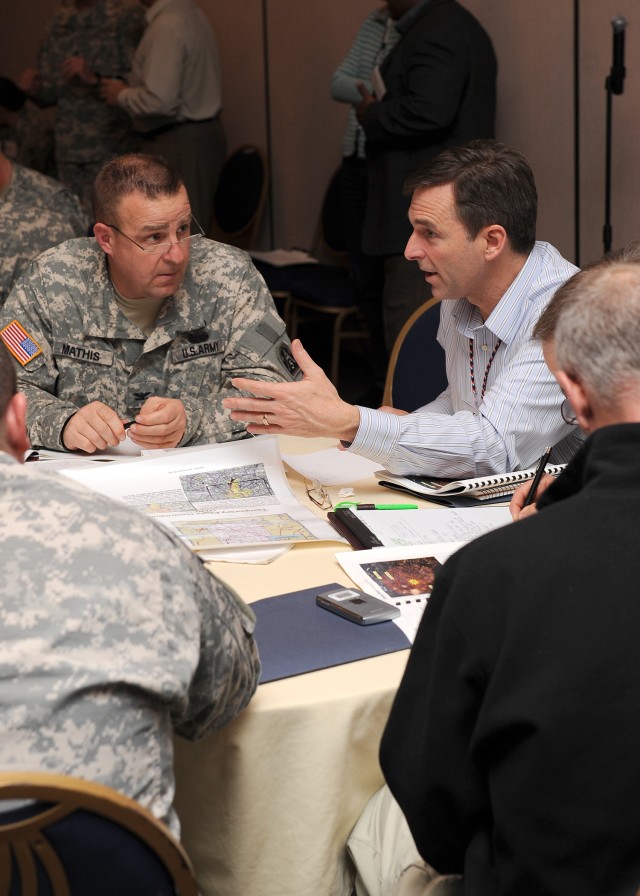
"The greatest danger to the American people is the threat of a terrorist attack with a nuclear weapon," states the President's foreign policy agenda published by the White House Jan. 21.
This fact is an everyday reality for the men and women of U.S. Army North at Fort Sam Houston.
The headquarters, commonly referred to as simply ARNORTH, is responsible for planning and coordinating the military land forces that would be called upon to aid the people and communities affected by a catastrophic disaster such as this.
"Our nation's first line of defense is to prevent terrorists from ever getting a nuclear capability," said Lt. Gen. Thomas Turner, commanding general of ARNORTH. "But the American people expect DOD forces to be ready to respond to any disaster our nation may face."
To help assure this readiness, ARNORTH co-hosted a conference with the Federal Emergency Management Agency in Hampton, Va., Jan. 27-29. The conference focused on leaders from the military, FEMA and other federal agencies that would be called upon within hours of an attack to support local and state first responders.
"We already have a great relationship with our partners at FEMA and throughout the federal government," said Col. Al Dochnal, ARNORTH's organizer for the conference. "We work with them routinely when military assistance is needed for natural disasters such as hurricanes, floods and wildfires.
"A nuclear terrorist attack, however, is different than any of these disasters," he continued. "It would likely come without warning, immediately overwhelming the first responders our communities depend upon."
Discussions at the conference covered a broad range of topics, from the medical demands of a nuclear blast and the complexities of evacuating survivors, to the specialized organizations available in the military and other government agencies to operate in a contaminated environment.
"We obviously have a lot of military resources available to assist local authorities," Dochnal said. "But we have to remember that we're there to help. It's those local officials where an incident occurs who are in charge on the ground. Not the military."
One of the most important aspects of the conference was simply to build relationships among the leaders from across the government who would help during a crisis, said Ted Monette, the director of FEMA's Federal Coordinating Officer Program.
"This is team building among professionals," Monette said. "The follow-on for this is the training and exercises we'll conduct together in the months ahead."

Social Sharing